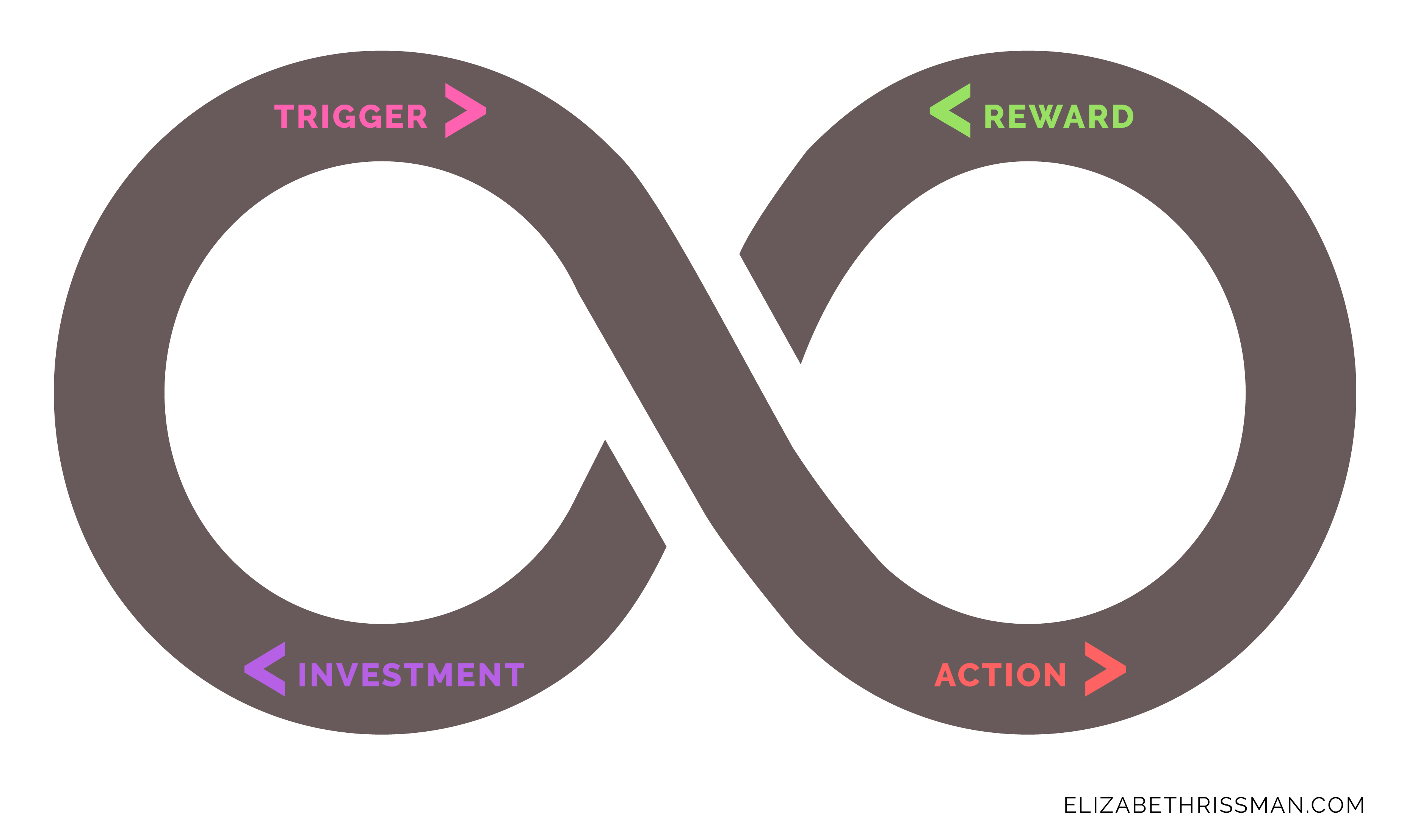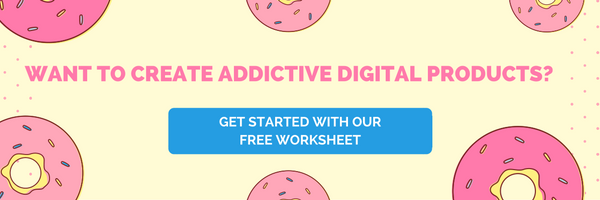What’s the difference between digital products that attract users like fat kids to cake, and ones that are just kind of meh?
The secret lies in creating an infinite user loop that quickly satisfies an emotional need, rewards the user, and then prompts the user to come back for more.
User behavior expert Nir Eyal explains this concept in his class on Skillshare, Hooked: Building Habit-Forming Products. (Because, clearly, I’m on a Skillshare binge lately.)
STEP 1: TRIGGER
What’s the emotional itch that your user needs to scratch?
Many of the industry’s most addictive social media apps focus on pacifying a negative emotion.
Here are a couple of examples:
If you’re lonely, you go on Facebook to feel socially connected.
If you’re bored at work, you may watch a couple of funny videos on YouTube.
STEP 1: TRIGGER
STEP 1: TRIGGER
STEP 2: ACTION
Once you’ve identified the trigger, find out a way to tie this emotion to an action your user needs to complete. Simpler is always better.
Examples of simplistic action include hitting play on YouTube or scrolling on Instagram. The easier the action, the more likely the user is to engage, and then keep on engaging as they as rewarded for their action.
STEP 3: REWARD
According to cognitive psychology, it’s not necessarily the reward itself that we seek, but the alleviation of the anticipation we experience when we are seeking the reward.
Every time you get a like on a Facebook post, it’s a little social validation that says, “Hey, people think you’re interesting or cool on some level.” This fulfills our need for social connectivity while alleviating our fear of social rejection.
Like Las Vegas-style gambling, posting online has extremely variable outcomes. Sometimes your post is a hit, and sometimes you wonder if you may in fact be the most boring person alive.
STEP 4: INVESTMENT
If the reward phase is the immediate gratification, the investment phase gears the user up for the next hook.
Whereas physical products depreciate in value over time, digital products actually appreciate over time because they’re constantly collecting data that improves user experience.
Digital products, unlike physical goods, store value. This value creates the need to re-engage, which keeps the user coming back for more.
For example, the more a user makes purchases via Amazon, the more accurately Amazon is able to recommend similar or complimentary products, which prompts the user for future purchases.
Websites that allow you to build up a reputation, like Airbnb, are another example of investment. The more time you spend building up a reputation, the less likely you are to switch to a different but similar app.
Of course, the clincher is that apps have become incredibly savvy in building in little trip wires throughout the user journey, either via email or mobile notifications, creating a hook to draw the user back into the infinite loop.




Leave a Comment